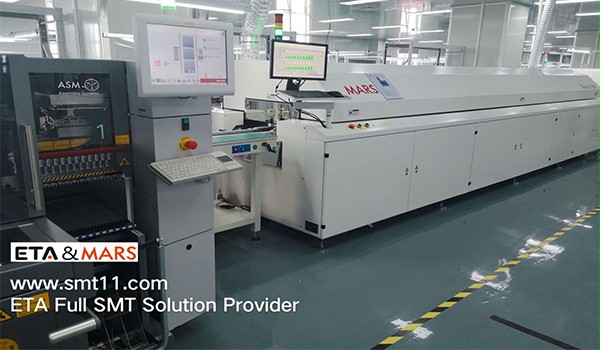Reflow Soldering Oven Process Requirements
Reflow soldering oven technology is not unfamiliar in the field of electronics manufacturing. The components on the various boards used in our computers are soldered to the circuit board through this process. The advantage of this process is that the temperature is easy to control, oxidation can be avoided during welding, and the manufacturing cost is easier to control. There is a heating circuit inside this device, which heats the nitrogen to a high enough temperature and blows it to the circuit board where the component is already attached, so that the solder on both sides of the component is melted and then bonded to the motherboard.

1. Set up a reasonable reflow oven temperature curve and perform real-time testing of the temperature curve regularly.
2. The welding should be carried out according to the welding direction of PCB design.
3. Strictly prevent vibration of the conveyor belt during welding.
4. The welding effect of a printed board must be checked.
5. Whether the soldering is sufficient, whether the surface of the solder joint is smooth, whether the solder joint shape is half-moon shape, the condition of tin balls and residue, the condition of continuous welding and virtual welding. Also check the PCB surface color changes and other conditions. And adjust the temperature curve according to the inspection results. Check the welding quality regularly during the whole batch production process
SMT reflow oven process
The process flow of soldering SMD components to the printed circuit board using reflow soldering technology is shown in the figure. In the process, the paste solder paste composed of tin-lead solder, adhesive and flux can be applied to the printed circuit board manually, semi-automatically, and fully automatically. Manual, semi-automatic or automatic screen printing machine can be used, as The solder paste is printed on the printed board like mimeograph. Then use manual or automatic mechanical devices to bond the components to the printed board. The solder paste is heated to reflow using a heating furnace or hot air blowing method. The heating temperature needs to be accurately controlled according to the melting temperature of the solder paste. This process includes: preheating zone, reflow soldering zone and cooling zone. The maximum temperature of the reflow soldering area causes the solder paste to melt, and the adhesive and flux are vaporized into smoke and discharged.
❙ SMT Reflow Oven Video